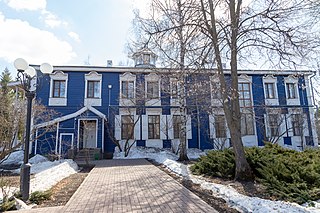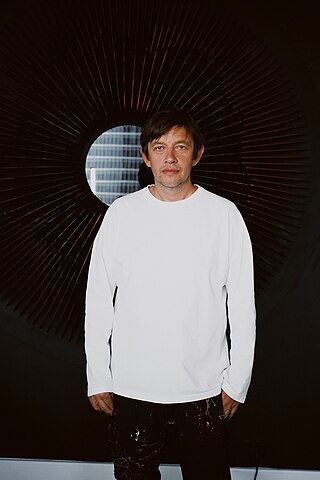Related Research Articles

Political identity came to the territory now occupied by the Principality of Liechtenstein in 814, with the formation of the subcountry of Lower Rhætia. Liechtenstein's borders have remained unchanged since 1434, when the Rhine established the border between the Holy Roman Empire and the Swiss cantons.

Sergei Vasilyevich Rachmaninoff was a Russian composer, virtuoso pianist, and conductor. Rachmaninoff is widely considered one of the finest pianists of his day and, as a composer, one of the last great representatives of Romanticism in Russian classical music. Early influences of Tchaikovsky, Rimsky-Korsakov, and other Russian composers gave way to a thoroughly personal idiom notable for its song-like melodicism, expressiveness, dense contrapuntal textures, and rich orchestral colours. The piano is featured prominently in Rachmaninoff's compositional output and he used his skills as a performer to fully explore the expressive and technical possibilities of the instrument.

Vladimir Davidovich Ashkenazy is an internationally recognized solo pianist, chamber music performer, and conductor. He is originally from Russia and has held Icelandic citizenship since 1972, and Swiss citizenship later. He has lived in Switzerland since 1978. Ashkenazy has collaborated with well-known orchestras and soloists. In addition, he has recorded a large repertoire of classical and romantic works. His recordings have earned him five Grammy awards and Iceland's Order of the Falcon.

Lucerne or Luzern is a city in central Switzerland, in the German-speaking portion of the country. Lucerne is the capital of the canton of Lucerne and part of the district of the same name. With a population of approximately 82,000 people, Lucerne is the most populous city in Central Switzerland, and a nexus of economics, transportation, culture, and media in the region. The city's urban area consists of 19 municipalities and towns with an overall population of about 220,000 people.

The Rhapsody on a Theme of Paganini, Op. 43, is a concertante work written by Sergei Rachmaninoff for piano and orchestra, closely resembling a piano concerto, all in a single movement. Rachmaninoff wrote the work at his summer home, the Villa Senar in Switzerland, according to the score, from 3 July to 18 August 1934. Rachmaninoff himself, a noted performer of his own works, played the piano part at the piece's premiere on 7 November 1934, at the Lyric Opera House in Baltimore, Maryland, with the Philadelphia Orchestra conducted by Leopold Stokowski.

Sergei Rachmaninoff's Piano Concerto No. 3 in D minor, Op. 30, was composed in the summer of 1909. The piece was premiered on November 28 of that year in New York City with the composer as soloist, accompanied by the New York Symphony Society under Walter Damrosch. The work has the reputation of being one of the most technically challenging piano concertos in the standard classical piano repertoire.
Dmitri Alexeev is a Russian pianist. He studied at the Moscow Conservatory, and additionally under Dmitri Bashkirov. In the 1970s, Alexeev made his debuts in London, Vienna, Chicago, and New York City, and also won the Leeds Piano Competition in 1975.

Alexander Ilyich Siloti was a Russian virtuoso pianist, conductor and composer.

Weggis is a municipality in the district of Lucerne in the canton of Lucerne in Switzerland.
Howard Gordon Shelley is a British pianist and conductor. He was educated at Highgate School and the Royal College of Music. He was married to fellow pianist Hilary Macnamara, with whom he has performed and recorded in a two-piano partnership, and they have two sons.
Sergei Rachmaninoff composed his Symphony No. 3 in A minor, Op. 44 between 1935 and 1936. The Third Symphony is considered a transitional work in Rachmaninoff's output. In melodic outline and rhythm it is his most expressively Russian symphony, particularly in the dance rhythms of the finale. What was groundbreaking in this symphony was its greater economy of utterance compared to its two predecessors. This sparer style, first apparent in the Rhapsody on a Theme of Paganini, enhances the emotional power of the work.

Symphonic Dances, Op. 45, is an orchestral suite in three movements completed in October 1940 by Russian composer Sergei Rachmaninoff. It is his final major composition, and his only piece written in its entirety while living in the United States.

Julius or Jules Conus was a Russian violinist and composer.
The Bells, Op. 35, is a choral symphony by Sergei Rachmaninoff, written in 1913 and premiered in St Petersburg on 30 November that year under the composer's baton. The words are from the poem The Bells by Edgar Allan Poe, very freely translated into Russian by the symbolist poet Konstantin Balmont. The traditional Gregorian melody Dies Irae is used frequently throughout the work. It was one of Rachmaninoff's two favorite compositions, along with his All-Night Vigil, and is considered by some to be his secular choral masterpiece. Rachmaninoff called the work both a choral symphony and (unofficially) his Third Symphony shortly after writing it; however, he would later write a purely instrumental Third Symphony at his new villa in Switzerland. Rachmaninoff dedicated The Bells to Dutch conductor Willem Mengelberg and the Concertgebouw Orchestra. The US Premiere of the work was given by Leopold Stokowski and the Philadelphia Orchestra and Chorus on 6 February 1920 and the UK Premiere by Sir Henry Wood and the Liverpool Philharmonic and Chorus on 15 March 1921.

Piano Sonata No. 1 in D minor, Op. 28, is a piano sonata by Sergei Rachmaninoff, completed in 1908. It is the first of three "Dresden pieces", along with the Symphony No. 2 and part of an opera, which were composed in the quiet city of Dresden, Germany. It was originally inspired by Goethe's tragic play Faust; although Rachmaninoff abandoned the idea soon after beginning composition, traces of this influence can still be found. After numerous revisions and substantial cuts made at the advice of his colleagues, he completed it on April 11, 1908. Konstantin Igumnov gave the premiere in Moscow on October 17, 1908. It received a lukewarm response there, and remains one of the least performed of Rachmaninoff's works.

Russian Rhapsody is a piece for two pianos in E minor composed by Sergei Rachmaninoff in 1891, when he was 18 years old. It is more accurately described as a set of variations on a theme, rather than a true rhapsody. It was premièred on October 29, 1891, and its performance lasts approximately nine minutes.

Sergei Vasilievich Rachmaninoff (1873–1943) was a Russian composer, virtuoso pianist, and conductor. Rachmaninoff is widely considered one of the finest pianists of his day and, as a composer, one of the last great representatives of Romanticism in Russian classical music.

Vasily Klyukin is a Russian-born, Monaco-based visual artist, sculptor and architect.

The Homecoming, also known as The Return or Returning Home, is a painting by the Swiss Symbolist artist Arnold Böcklin (1827–1901). It was painted by the artist in 1887, and is in a private collection.
References
- 1 2 "Sergei Rachmaninoff". Sergei Rachmaninoff (in Swiss High German). Retrieved 2023-04-01.
- 1 2 3 "Villa öffnet als Kulturzentrum - Luzern steckt Millionen in die Villa von Starpianist Rachmaninoff". Schweizer Radio und Fernsehen (SRF) (in German). 2023-04-01. Retrieved 2023-04-01.